Actua Soccer 2
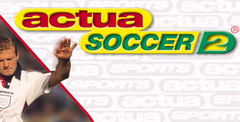
| a game by | Gremlin |
| Platforms: | PC (1997), Playstation |
| Editor Rating: | 6.5/10, based on 1 review |
| User Rating: | 8.0/10 - 3 votes |
| Rate this game: | |
| See also: | Sport Games, Sports Management Games, Soccer Video Games |
The Great Thing About Actua Soccer 2 is that it's fast easy to control and easy to learn. When you first start playing it may seem very hard to score and you'll get thrashed - this is because you don't know how the computer AI works. The first thing to remember is that the AI isn't perfect, but you've got to leam to live with it and play within it to succeed. At times the auto-player select will frustrate you as control switches from player to player while the AI tries to keep up with the pace of the game. Live with it and if possible learn to exploit it by playing through-balls when you're playing against human opposition. The PSX version of the game had a useful feature that enabled you to keep control of a player (by simply holding the right shoulder button). Sadly this innovative feature was left out of the PC version, but Gremlin have promised us that the next version of the game will include such a feature.
The bends
When you first start playing, we suggest you stick to the 'Amateur' or 'Semi-professional' skill. While you won't be able to bend the ball as much when shooting, the AI in other areas is more helpful in that the ball will stick to players' feet more easily, enabling you to twist and turn and beat defenders, and your passing will generally be more accurate. It goes without saying that if you're not having much success with England or Lithuania, try switching to Brazil or Germany and playing friendlies against Luxembourg or Saudi Arabia to improve your basic ball skills and confidence.
If you're leaking goals like Barnsley, try playing with a more defensive formation (see Formations panel, next page). We also suggest man-to-man marking instead of zonal, and recommend you play a passing game that enables you to build up your attack from the back. Once you're more adept on the ball, switch to 'Professional' or 'International' level.
Defending
Defending is an art. And here's how to become the Jackson Pollock of the Actua Soccer world.
There are two ways to perform a tackle in Actua Soccer 2. The first is to run into the player with the ball and try and 'barge' him off it. You don't need to press a particular button, but you should try and make sure you're ready if and when the ball breaks loose. Use your pace (by tapping the speed-burst button) to try and shepherd the attacker into an area of the pitch that isn't so dangerous, so that if you do give a free kick away it won't allow the opposition a shot at goal.
The other way to stop a player bearing down on your keeper is the 'sliding tackle' - fine term implying a slightly reckless lunge, not the result of naked bobsleighing. This kind of challenge is best taken as a last resort or only when supremely confident that you can come away cleanly with the ball. More often than not, especially if you're new to the game, in the box or just plain clumsy, the end result will be a free kick, a possible booking or even a sending off - you have been warned.
Scoring
The range of shots available in Actua Soccer 2 is vast, but the nature of the game dictates that longer-range shots are more likely to fly in than tap ins from within the box, due to the cat-like ability of the keepers. Experience suggests that a pile driver from just outside the area, preferably at an angle and with a bit of after-touch, will find the back of the net. Keep your eye on the power bar to get maximum power to your shots. You may even want to try holding the shoot button down until you manage to pull defenders out of position before letting off a shot. Remember that your chance of success will be much higher if you can have a quick look and then angle your shot accordingly. For example, if you switch the attack across the pitch very quickly and the keeper is still at the far side of the net a low shot right in the corner should be enough to beat him. Alternatively, try pegging it down the wing and putting a high ball into the box.
To trigger a first-time shot volley, overhead kick, diving header etc, get your player into position and hammer away on the shoot button while the ball is in the air. This method of attack isn't as fail-safe as it was in the original version of the game, but you will enjoy some success with it if you persevere (it also looks good).
When you get through on goal, always try to check the keeper's position, as they're very good at narrowing the angle and seem to have elastic arms. Consequently it's very difficult to score from close range, so if you're getting too near the goal, turn back and try a shot from further out. If your path is blocked, try shooting at an angle across the face of the goal and using after-touch to bend it into the net.
Chip shots (executed by pressing the shoot button and rocking back on the pass button simultaneously) rarely get past the keeper, so don't even bother. However, if you manage a quick break it is possible to score with a long pass (lob) from just over the halfway line - especially if Seaman is in goal.
Passing
Opportunities are created and goals scored by pulling opposition players out of position. Create chances for your team by keeping possession and passing the ball around in midfield. Switch play from wing to wing using the long pass, and use one-twos (by double-tapping the pass button) to create space. The speed burst is useful to beat defenders when you have the ball, though be sure not to change direction once you've knocked it into space or you'll lose possession. Also, use the speed burst sparingly as it affects the players' performance, especially when shooting.
The through ball should be used sparingly - there are no perfect positions from which to try it, but some players will have more success than others. The best time to try it is when attempting to pass the ball up the pitch rather than sideways or behind.
Always try to vary your tactics and change your formation accordingly to keep your opponent guessing. If you're playing 5-3-2, try to bring it up from the back using your wing-backs. If you're playing 4-4-2, try hoofing it up into midfield and using your midfielders to run onto the ball. If you use the speed burst correctly you should be able to get into a shooting position before your opposing defenders know what's going on or execute a slick one-two with one of your forwards. It's not pretty, but it often works. To combat fatigue, bring on fresh legs in the second half.
Remember to play players in their positions and pass the ball rather than run with it If you use a defender to charge up the pitch with the ball and let off a shot, you'll be left short at the back and open to counter-attack. Also consider that defenders aren't usually very good at shooting (check their stats), so work on passing the ball from defence to midfield to your front men to increase your chances of scoring.
Free kicks and set pieces
When you get a free kick, the view will change to that from the dead ball camera, enabling you to see exactly what's going on upheld. By moving up and down once you've highlighted a player, your players should start trying to run into space.
If you're close enough to goal you'll be able to have a crack - highlight the player nearest the part of the net you want to aim for. and then use the direction keys to bend the ball towards the net You'll have more success on 'International' setting, as this enables players to bend the ball more than on 'Amateur'. Remember to let the power bar increase dependent on how close you are to goal - full power from Shearer on the edge of the box and the ball will probably end up in row Z.
It's very difficult to score from comers, but you can create chances in the box. Try highlighting a player and moving up and down, and your players will start to run around trying to find some space. A decent cross followed by the hammering of the shoot button will lead to your player trying a first-time move - header, volley etc.
As far as penalties are concerned it's a bit of a lottery. The keepers in penalties are all computer-controlled, and no amount of key-pressing will change that. Again, the amount of swerve and bend you can get on the ball will depend on which setting you're playing at and which player is taking the kick. Also, you may need to watch the power bar - you don't need to blast it every time. Try hitting a shot as softly as possible, as this often fools the keeper. If all else fails, try banging it in full-power, dead straight, and watch the keeper dive out of the way. You won't score all of the time, but then who does?
Play(er) maker
You may want to design your very own uber-team to take on the world. In which case consider these factors when designing a team: only spend points on 16 players, since there are no suspensions and you only ever need 11+ five subs. Concentrate on speed, handling and shooting when assigning players' points. It also pays to 'spend' a lot on your keeper.
Alternatively, put all your eggs in one basket and create a superhuman striker, switch to long-ball tactics and play him up front as the ultimate target man. Much more effective than Emile Heskey, and more fun than supporting Leicester.
Formations
4-4-2
The standardEnglish formation - solid as a rock. The defence play in a line and hold firm until opposing forwards are almost upon them. This formation will also give you a decent presence in midfield, enabling you to spring into attack like a startled gazelle. Think Arsenal on a good day.
4-3-3
Forward-thinking and quite adventurous - it could leave you a little vulnerable if the opposition starts trying to play through-balls in the centre of the park. However, the extra player up front will offer you more attacking options, and if faced by five at the back or a sweeper system you may find that two forwards just aren't enough. It works for Wimbledon. Sometimes.
4-5-I
Again, a moredefensive formation than the first two. This should help you keep opposition strikers in check as well as ensuring a strong presence in midfield. The only drawback is that you're left with a solitary player up front. The biggest consideration here is whether your striker is up to it. He's not going to get a lot of support, so if it's a custom team you'll need to ensure your striker has a lot of pace and excellent finishing. Make him pretty big as well, then he can shrug off any challenges. If you're not opposed to playing a long-ball game then this formation is worth considering - quick ball over the top to a Ronaldo-style forward and the job's a good 'un. However, if your striker's more Robert Rosario than Alan Shearer then you're probably wasting your time. Latterly, Spurs played this formation under Gerry Francis. Need we say more?
5-3-2
This cautiousset-up should be a big consideration when faced by technically superior opposition. For example, if you're playing Brazil, whose forward line is among the best - if not the best - in the world, five at the back should help give you a platform from which to build attacks and should also help in controlling a couple of star strikers. Superstar attackers or vastly experienced Soccer 2 players will rip the heart out of an inexperienced player with just four at the back. The extra man gives you a little longer to see attacks building. Er... think Aston Villa. Or maybe Chelsea?
Download Actua Soccer 2

System requirements:
- PC compatible
- Operating systems: Windows 10/Windows 8/Windows 7/2000/Vista/WinXP

System requirements:
- PC compatible
- Operating systems: Windows 10/Windows 8/Windows 7/2000/Vista/WinXP
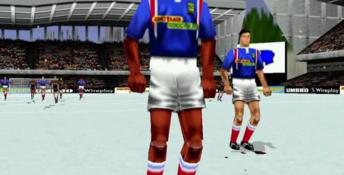
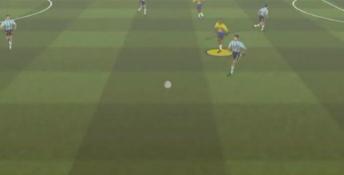

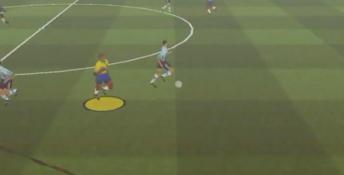
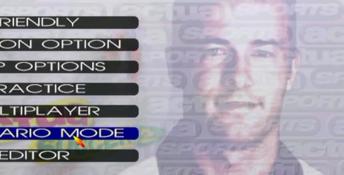
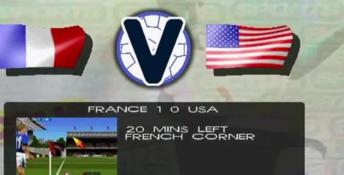
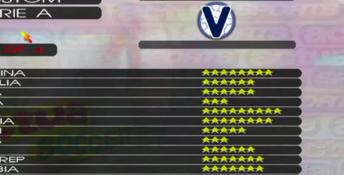
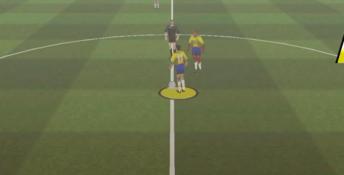
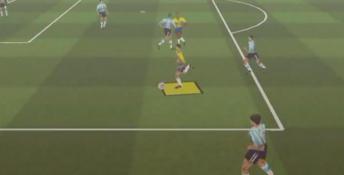
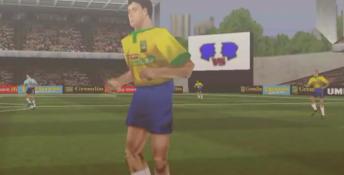
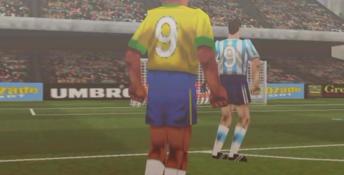

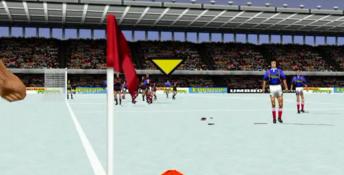
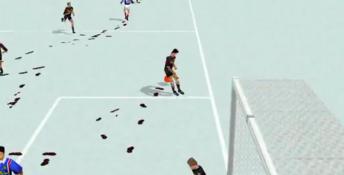
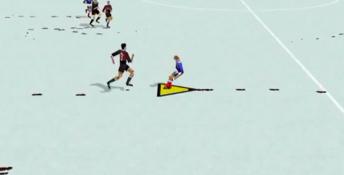















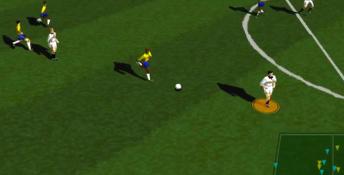
 Championship Manager: Season 99/00
Championship Manager: Season 99/00 Championship Manager: Season 00/01
Championship Manager: Season 00/01
 Microsoft International Football 2000
Microsoft International Football 2000
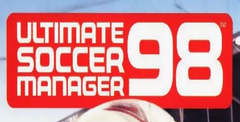 Ultimate Soccer Manager 98
Ultimate Soccer Manager 98
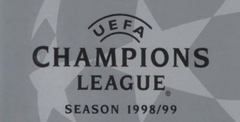 UEFA Champions League Season 1998-99
UEFA Champions League Season 1998-99
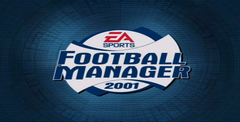 The F.A. Premier League Football Manager 2001
The F.A. Premier League Football Manager 2001